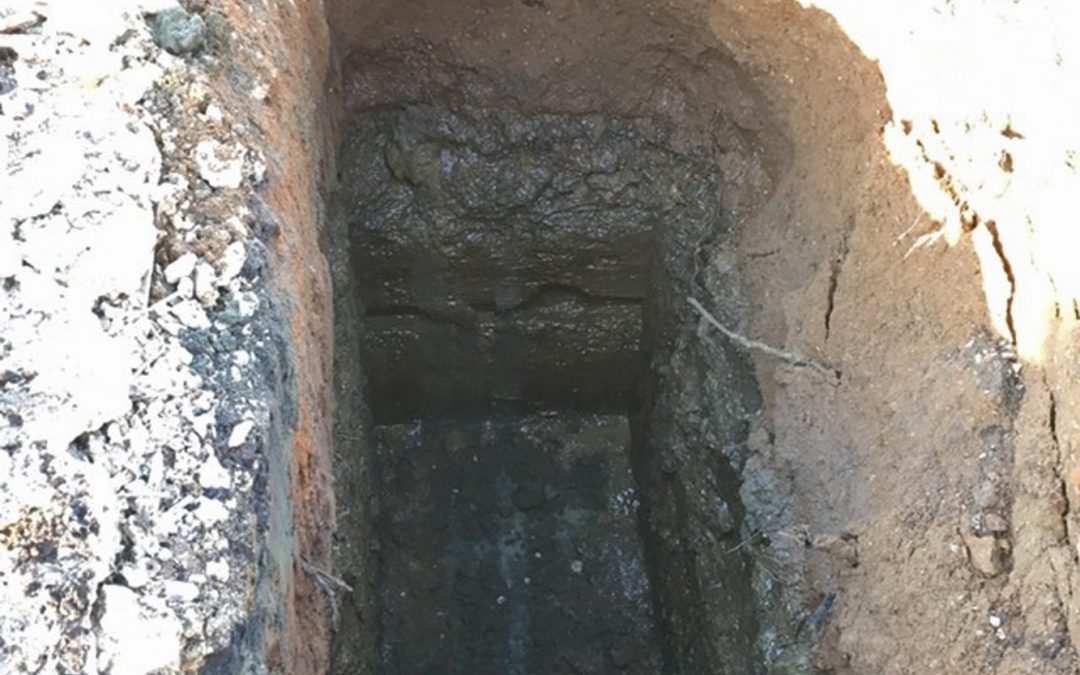Trial pit safety
Geotechnical • Regulation
TRIAL PIT SAFETY – KEEP YOUR MITTS OFF OUR PITS
The HSE’s radar has locked onto trial pit safety. Its focus is the use of trial pits and soakaway testing as part of site investigation work. It has called for the Geotechnical and Geoenvironmental industry to justify their use.
There is no doubt that working in excavations can be dangerous. In 2011, Cotswold Geotechnical Holdings was found guilty of causing the death of a 27-year old junior geotechnical engineer, under the Corporate Manslaughter Act 2007. Alexander Wright died of traumatic asphyxia on a site in Gloucestershire, when the 3.8m deep trial pit that he was working in collapsed. The weight of the soil crushed his lungs. He was alone on site at the time of the accident. Contrary to trial pit safety guidance, he shouldn’t have been there!
But it seems that when compared to other construction related accidents, this tragedy was exceptional. Each year the Health & Safety Executive (HSE) lists on its website, many examples of near miss, serious and fatal accidents relating to construction sites. The majority involved falls from height and death and injury caused by vehicles or plant. In 2017, the HSE only brought three prosecutions for accidents where workers were killed or injured while working in excavations. In all three cases, injuries were caused by heavy objects falling on workers from above. There were no examples of trench collapse, but the risk from above has caught the HSE’s attention.
Ground & Water is a member of the Association of Geotechnical and Geoenvironmental Specialists (AGS). The AGS’s Safety Working Group has recently been advised by the HSE that trial pit excavations constitute working from height. Additionally, it believes that filling them with water to perform soakaway tests constitutes a further health and safety risk; given the necessity for engineers to be near to the open excavations in order to measure water levels. The AGS’s new Geotechnical Working Group has been tasked with reviewing the technical advantages and disadvantages of trial pits and soakaways. The aim is to evaluate possible alternatives that could achieve the same levels of technical information and compliance for architects, planners and developers, while minimising health and safety risks.
British Standard BS6031 – the code of practice for earthworks – and BS5930 – the code of practice for site investigations – already outline safe working practices. Given that this guidance exists, alongside BRE365 guidance on soakaway tests (including advice on unstable pit sides), the HSE’s intervention has ruffled some feathers within the site investigation industry.
A generally accepted view, and one supported by both Ground & Water and the initial findings of the Geotechnical Working Group, is that trial pits are the most effective way for geotechnical engineers to see materials in-situ. There are several limitations with samples obtained from windowless sampling and boreholes. Understanding the limitations of tests and the samples is very much at the heart of evaluating geotechnical data.
There is a wealth of other data that can be gained from trial pits. This includes understanding drainage and contamination pathways, settlement characteristics, chalk classification and accurate identification of variable geology. These factors can reveal potential geoenvironmental problems and they influence foundation design.
Trial pits are also very useful for determining the extent and nature of buried obstructions in the ground, which can impact on the extent and cost of excavations. Solely relying on other sampling methods could introduce significant risks, especially on brownfield sites. Abiding by safe working practices such as sampling soils from spoil heaps adjacent to the trial pit, and not entering open excavations unless they are properly shored against collapse, helps to minimise the inherent risks of trial pitting to an acceptable level.
Data gathered from soakaway tests is used to satisfy the requirements of local authorities and drainage engineers. While there are ways to reduce the risks associated with a water-filled trial pits, such as back filling with gravel and monitoring standpipe to perform tests on granular soils at risk of collapse (as suggested by BRE365), this is not without its own risks and introduces unwanted additional cost. Borehole-based infiltration methods can also be problematic, and do not yield truly representative results. The current challenge of the Geotechnical Working Group is to compare the results obtained by trial pit soakaways and other infiltration testing methods, such as ring infiltrometers or borehole-derived falling head tests, in an area of uniform geology in order to see how viable these alternatives may be in the long-term.
There can be an over-reliance from some developers on the use of trial pit soakaway testing when it is not always necessary, such as when in cohesive soils like the London Clay Formation, thus resulting in unnecessary risk. Finding cost-effective alternatives to these tests that produce equally reliable results is the next challenge to help further minimize the dangers faced by our engineers in the field.
In December 2016, the AGS launched new guidance on the safe excavation of trial pits. While we must do all we can to ensure the Alexander Wright tragedy is never repeated; we believe that when followed correctly current best practice guidance is sufficient to allow the use of trial pits and soakaways to continue. Without them, we risk compromising the safety of future construction projects.
